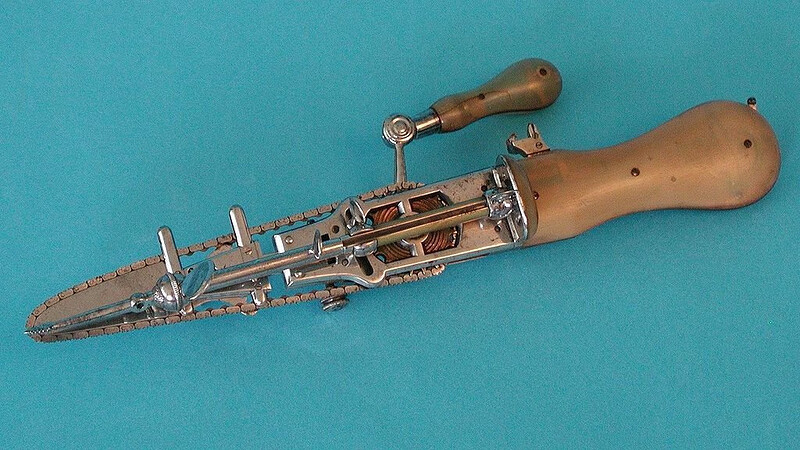When you picture a chainsaw, the typical uses that come to mind usually have to do with wood (and, you know, chopping it). So it might surprise you that the device’s origin lands about as far away from a lumber yard as you can get: The creators of the chainsaw were two Scottish surgeons named John Aitken and James Jeffray. And they developed their gnarly and dangerous device to help them do their jobs—cutting human bone and flesh.
Even under the best possible circumstances, giving birth is not what most would call a pleasant experience. But in the 18th century, prior to the development of anesthesia and other modern surgical tools, delivery could turn incredibly dangerous with little warning. When babies came out feet-first or their bodies were otherwise trapped in the birth canal, doctors would have to widen the pelvic area by cutting into the cartilage and bone. Aitken and Jeffray found that a sharp knife just didn’t do the trick in a timely fashion, so, somewhat shockingly, they created a chainsawas a more precise and humane option.
The resulting procedure was known as a symphysiotomy, and thankfully it is no longer in use today. What’s left is the chainsaw, which is now kept well away from surgical wards. Thank goodness.

